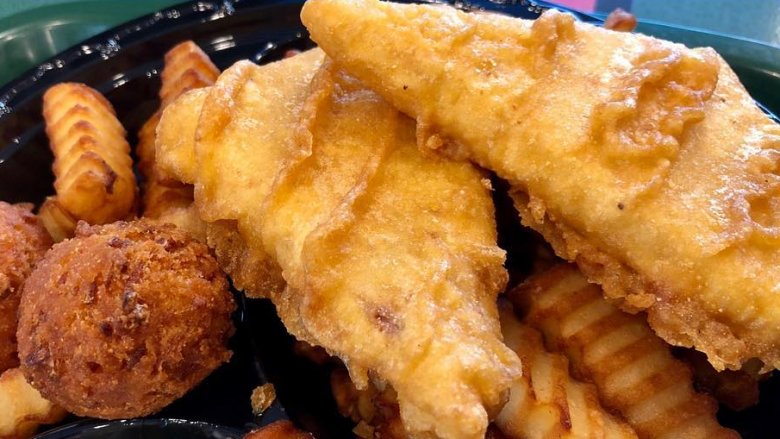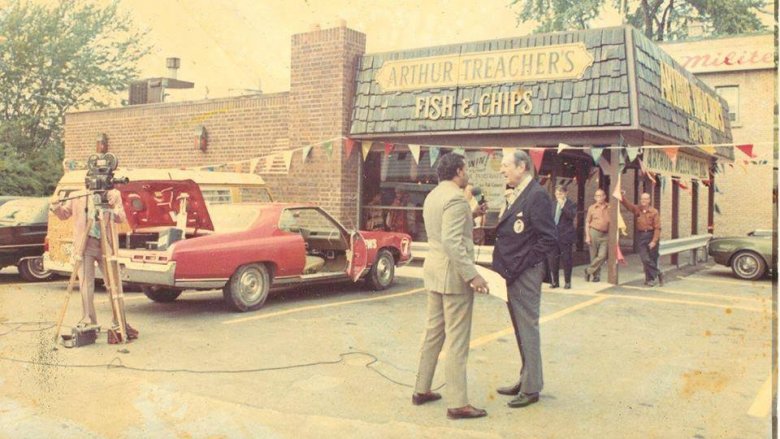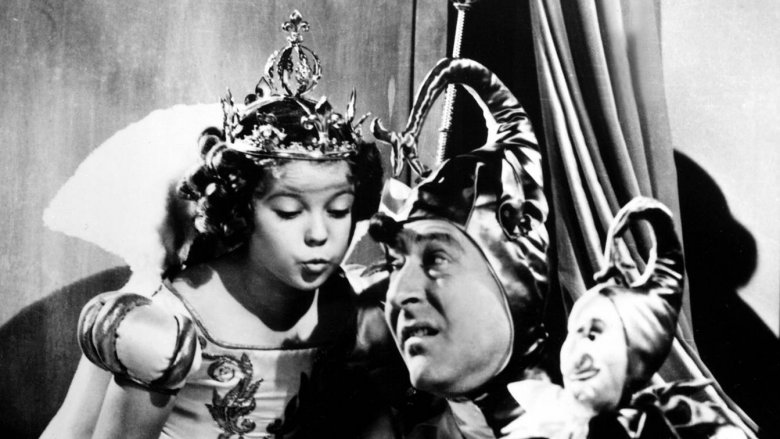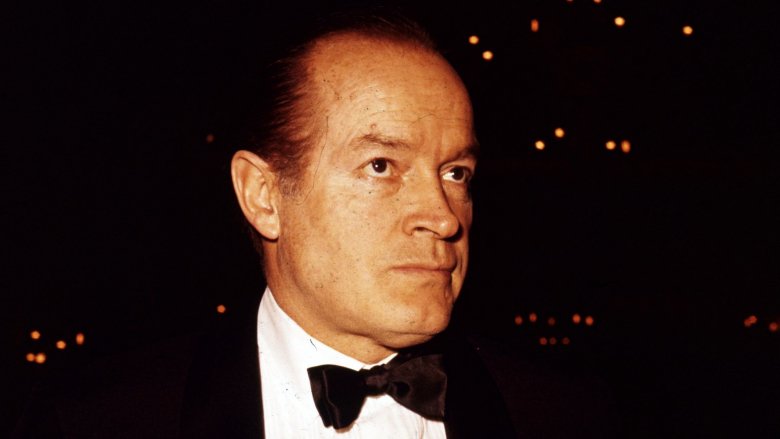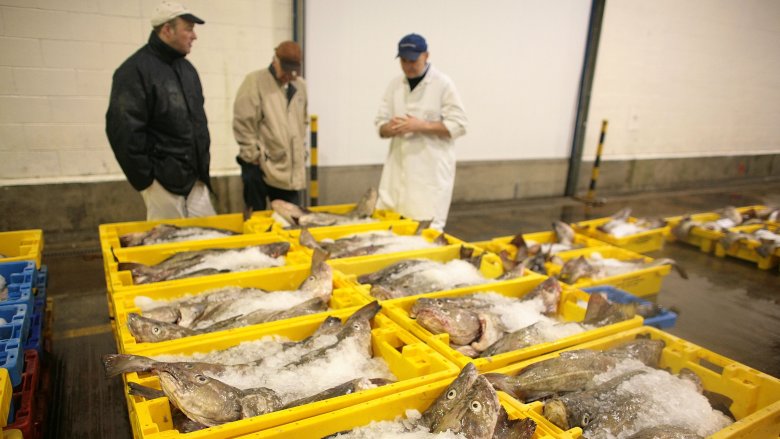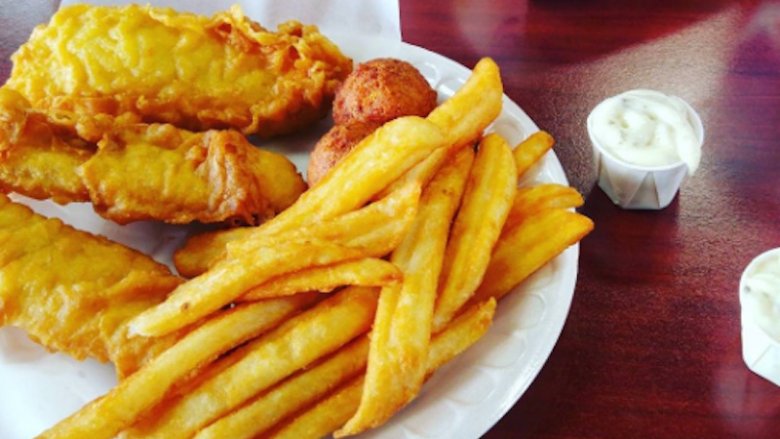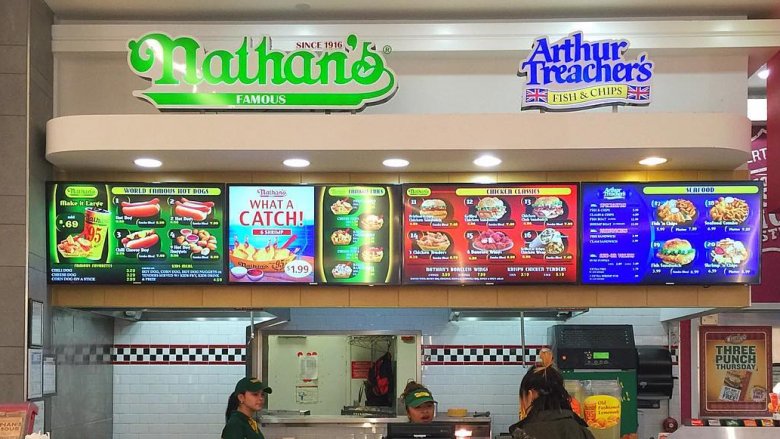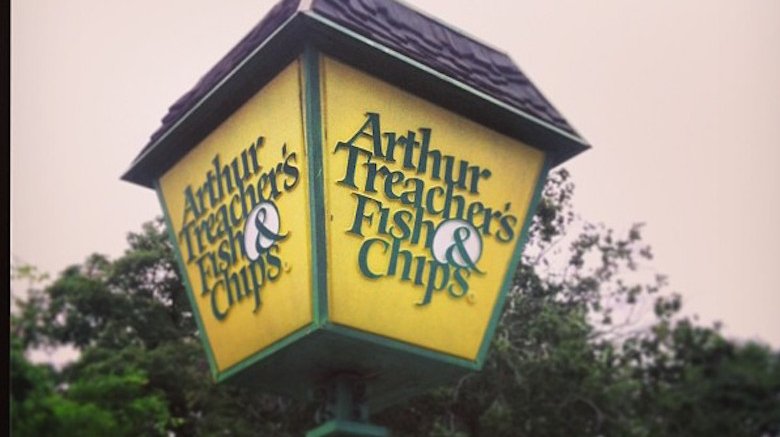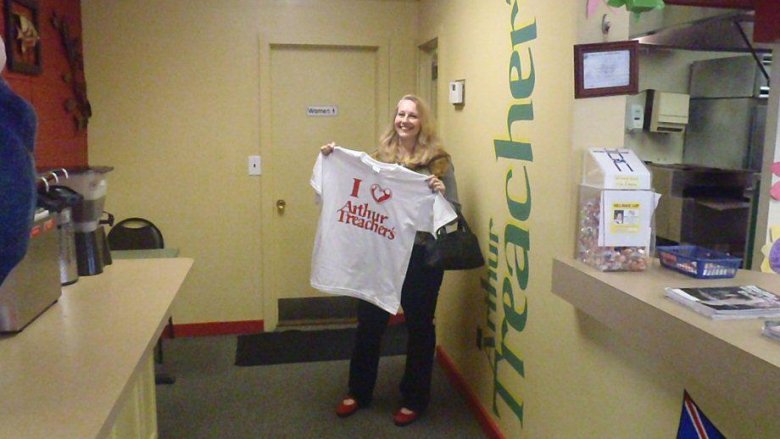Whatever Happened To Arthur Treacher's?
Move over, fast food fish sandwiches — any quick service meal worth its salt knows that Arthur Treacher's Fish & Chips was once the king of the fried fish fillet meal. Since the 1960s, this iconic restaurant offered customers a meal unlike anywhere else, a unique product that was rarely replicated, resulting in explosive growth that spread the name from coast to coast. Its yellow lantern was literally a beacon in the dark for those craving British-style fish and chips, its green shingle roof housing fast food trainees for decades.
Despite its early popularity however, it's nearly impossible to find an Arthur Treacher's now. The history of Arthur Treacher's is star-studded, and packed with dramatic rises and falls worthy of a Netflix documentary. Prepare for a hard-hitting dose of nostalgia as we dive into the world of Arthur Treacher's, and where it is today.
Arthur Treacher's made fish and chips a thing in the US
Quick service fried fish wasn't exactly a "thing" in America before Arthur Treacher's Fish & Chips came on the scene. Only a handful of restaurants offered it, according to K. Annabelle Smith's research for Smithsonian.com, with McDonald's and their Filet-O-Fish dominating the early 1960s. If people wanted to try authentic-style fish and chips, they either had to visit the United Kingdom, or call upon their British buddies to make some for them.
You'd think such a meal would have shown up on fast food menus somewhere coastal, like Maine, or Connecticut. The need for fried fish accompanied by thick cuts of fried potatoes actually was conceived a bit further inland. The first store opened in Columbus, Ohio, in 1969, through a company called National Fast Food Corp. According to the company website, fast food mogul Dave Thomas (yup, the "Wendy's Guy"), played a role in the restaurant's development. Soon after, restaurants spread across the state; Arthur Treacher's rapidly became a staple in the Ohio fast food industry. Who knew that such a quintessential British meal would become such a Midwestern fan favorite?
It was named after an actor
The restaurant was named after Arthur Treacher, a real-life actor who was best known for his work as Jeeves the butler in Thank You, Jeeves and. This set him up to be a quintessential character actor in British and American cinema, as well as radio spots. According to an article in Time magazine, Treacher was later hired as an announcer on The Merv Griffith Show, in 1962. He stayed the show until 1970, passing away shortly after in 1975 at the age of 81.
Arthur Treacher was very much involved in the development and advertisement of his namesake restaurant. Not only was his name licensed for the franchise, he was a spokesman for the restaurant, which lent credibility and boosted the restaurant's popularity in fast food culture. In 1975, The Bridgeport Post cited that Treacher sometimes said the recipe for the fast food joint's beer-battered cod fillets was based on his own recipe. Treacher was never featured in any television commercials, but his face is still found on doors of restaurants today.
Ed Sullivan and Bob Hope played a role in its development
He was known for rubbing elbows with Hollywood's hot shots, but in May, 1940, an entrepreneurial Ed Sullivan brought a compelling group of actors and personalities to Middle America — Akron, Ohio, to be precise. The United States was slowly recovering from the Great Depression, and World War II had begun overseas; Sullivan's Stardust Cavalcade revue was a welcome break for those dealing with the stress of such tragic events. Arthur Treacher was one of the performers, who delighted audiences with his stand-up routine. It was his first introduction to Ohio, a place he'd return to over and over again during his involvement in the future Arthur Treacher's Fish & Chips empire.
But it was legendary comedian and celebrity personality Bob Hope, who pushed the real life Arthur Treacher into the forefront of the fast food industry. Raised in Cleveland, Ohio, Hope was no stranger to the Ohio restaurant scene. In an interview for Cleveland.com, Bob Vittoria, owner of the Garfield Heights location stated that, "Bob Hope suggested the company work with Arthur Treacher, who was an old English actor ... Arthur would show up at openings in a double-decker bus — no one did anything like that, and it made Arthur Treacher's feel like a special night out, like you were going to England."
The Cod Wars really put a dent in things
With a team of celebrities touting fried seafood, Arthur Treacher's rapidly introduced fish and chips to a larger population of American diners. The big key to their success? Frying up fillets of cod, just like the kind you'd find used in a traditional English fish and chips shop. It was so beloved that in just a few short years, Arthur Treacher's had become nearly as popular as McDonald's. Arthur Treacher's quickly expanded, with at least 800 stores throughout the United States at their peak.
Their rapid growth came to a sudden halt when a literal Cold War over cod fishing was fought between several European nations. To put the story short, the Cod Wars began with a battle of fishing between Iceland and the UK. Three separate Cod Wars were fought, the final one in 1976 resulting in "the closure of the Icelandic grounds, effectively ending British long-distance fishing" according to a post on The National Archives. These back and forth conflicts caused issues in the United States as well, where the price of cod became almost too expensive to import.
Mrs. Paul's tried to help, but caused more issues
Business for Arthur Treacher's began to crash, based on how expensive cod fillets became. Franchises everywhere were hurting, and in a last-ditch effort to save the brand, the company was sold to Mrs. Paul's, in 1979. The hope was that the frozen fish manufacturer would be able to supply restaurants with frozen fish products that would help recoup the losses. Instead however, things got...fishy.
The most controversial thing Mrs. Paul's ever did was meddle with the recipe customers had grown to adore. The meaty cod fillets, which had put Arthur Treacher's on the map, were replaced with pollack. The fish was cheaper, which saved money, but customers saw right through the bait and switch. Many former fans of Arthur Treacher's attribute this grave mistake as the real reason the restaurant fell from grace. Pollack's consistency is oilier, and more prone to flaking apart than cod, causing it to crumble within its fried pocket and thus reducing the quality of the fish and chips experience. Arthur Treacher's continues to use "wild caught Alaska pollack" as their fish of choice.
Nathan's saved the day in the early 2000s
The Arthur Treacher's name was bought and sold several times over the 1980s and 1990s, with many of its parent companies declaring bankruptcy soon after the sales. Its popularity rose and fell while the brand desperately tried to expand across the United States. In a forum on AtDetroit.net, a user who claims to have worked at Arthur Treacher's from 1985-1997 stated that, "the Arthur Treacher's company tried to "re-introduce" their name back into the Metro-Detroit area by buying some of the vacant Seafood Bay stores and re-opening them as "Arthur Treacher's Seafood Grille" ... but the venture fell through." The iconic fish and chips shops closed across the nation, leaving an uncertain future for quick service fried fish.
Just when things started to look bleak, an unlikely hero-wrapped-in-a-bun emerged. While stand-alone Arthur Treacher's shops are hard to come by, it's very likely you'll come across one anywhere that sells Nathan's Famous Hot Dogs. That's because, according to the Arthur Treacher's website, the company was acquired by the Nathan's Famous parent brand in 2002, and eventually fell under the TRUFOODS, LLC co-franchisor label in 2007. It's been synonymous with the Nathan's brand ever since. We have Nathan's to thank for making hot dogs and fried fish an unlikely but delicious combo.
There's only one restaurant left
Arthur Treacher's may have had 826 locations in its heyday, but after such a tumultuous past, hardcore fans can only experience the fresh catch-style taste at the one Arthur Treacher's Fish & Chips restaurant still in existence. The final Arthur Treacher's location can be found in Akron, Ohio, the state where it all began.
Former customers are quick to reminisce about their favorite fast food fish and chips experiences. "One of my uncles used to work at Arthur Treacher's, so we had a plastic Arthur Treacher's tray in my house growing up long before I ever sampled the chain's signature fish and chips," said Ted Berg, in his article, "All 59 fast-food restaurants I can remember eating at, ranked." A Google search of the restaurant reveals even more memories. Many community members got their first job at Arthur Treacher's, or went on to own restaurants of their own. It's nice to know the positive impact Arthur Treacher's, and the fish and chips offerings, had on so many people.
It has a religious following - literally
Ohio wasn't a totally random choice when it came to opening the first Arthur Treacher's. Catholicism is one of the most popular religions in the state of Ohio, according to Julie Irwin Zimmerman's article for Cincinnati Magazine. In her research, she found that an Ohio McDonald's owner allegedly invented the Filet-O-Fish to provide meals for customers during Lent. It only made sense to open an Arthur Treacher's in the same state, and provide direct competition for customers seeking meatless alternatives. The convenience of serving fried fish for consumers abiding by traditional Catholic customs proved to be successful, with many customers returning after the Lenten season was over.
Ben Vittorio, owner of an original Arthur Treacher's in Ohio, often comments about the restaurant's "religious following." Many customers would visit their closest shop after church on Sundays, for a quick but satisfying afternoon lunch. "We had a line of people outside waiting for us to open on Ash Wednesday," he said, in a post for Cleveland.com. "They came all the way from Toledo." QSR Magazine also wrote about how people came to Arthur Treacher's in droves to get their grub during religious holidays. "Lenten season is hands-down the busiest of the year ... many of the brand's units bring in 30–35 percent of the full year's business during the roughly six weeks of Lent."
